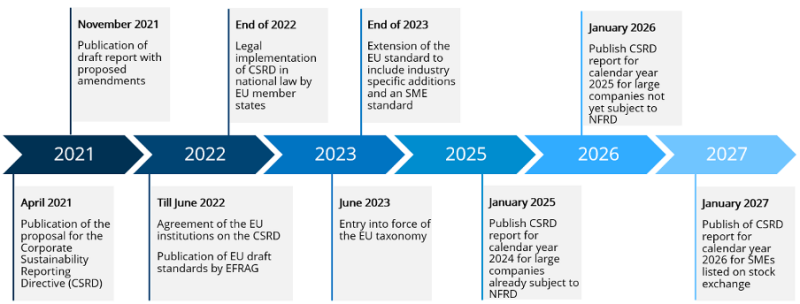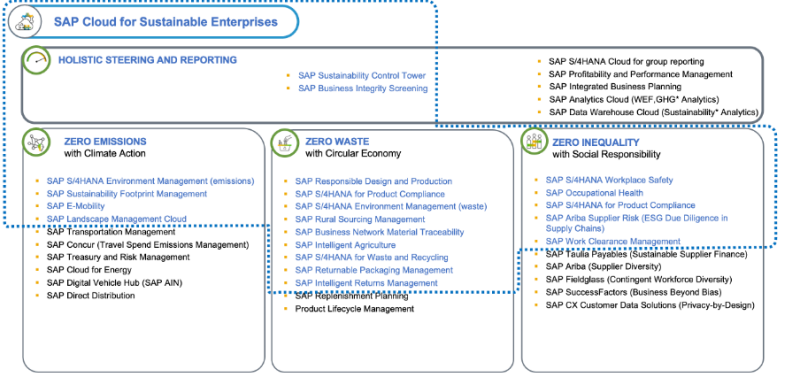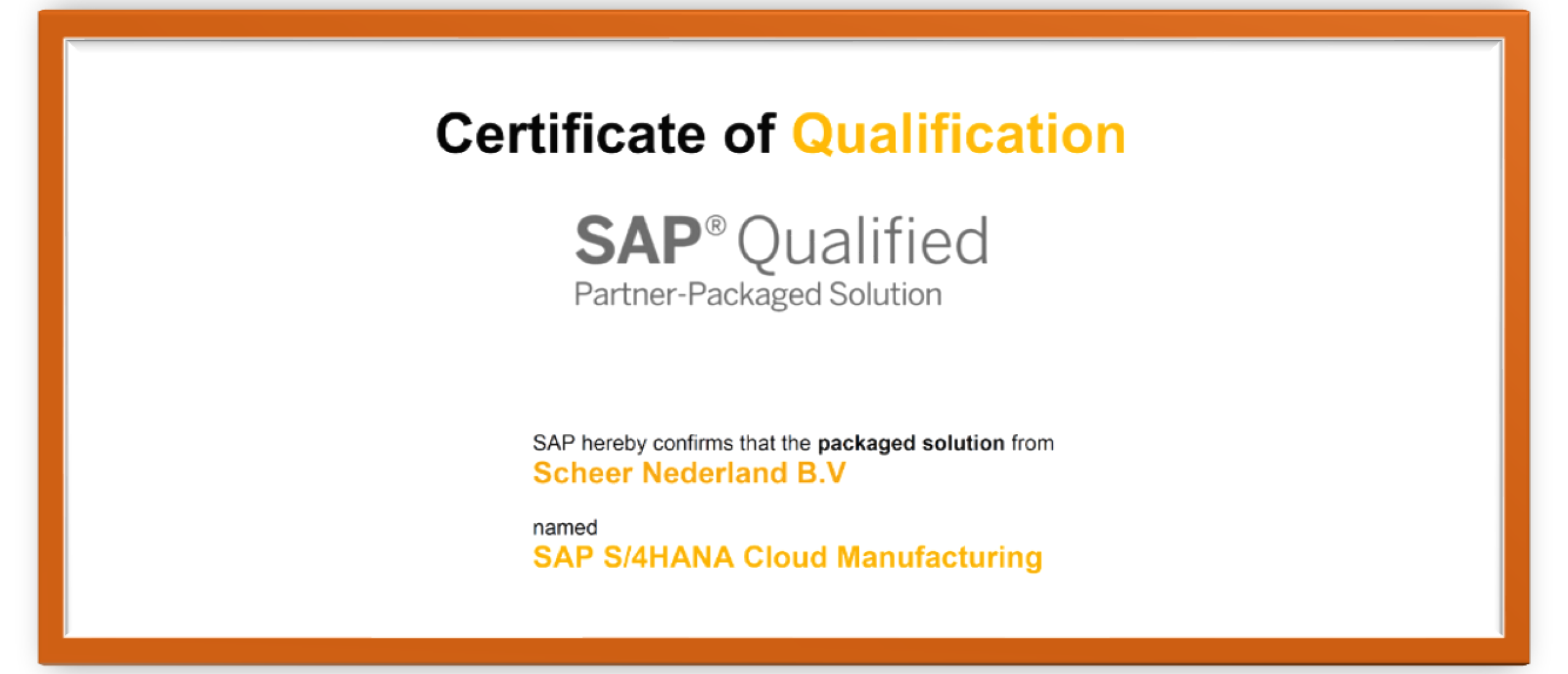
Sustainability: What, Who When and most importantly How ...
It is impossible to imagine the news without it, the term Sustainability. But what does it really mean? Why is it a hot topic right now? Who does it apply to? And possibly more importantly, how are we going to be able to comply with it?
Sustainability is a broad term. To make it tangible and measurable for businesses, in 2015, the United Nations (UN) established 17 key goals, aiming to improve health and education, reduce inequality, and most importantly, reduce climate change, among other things.
Climate change is seen worldwide as one of the biggest business risks. The energy transition is an important development that no one can ignore; in the Netherlands alone, CO2 emissions must be reduced by 95% by 2050.
Corporate Sustainability Reporting Directive
The Corporate Sustainability Reporting Directive (CSRD) is a directive adopted by the European Commission in April 2021. This directive requires organizations to report on the environmental and social impact of their business activities. In addition, this data must be reviewed by auditors.The CSRD aims to provide more transparency and improve the quality of sustainability information. Here are some key points:
Scope: The CSRD applies to large public interest entities, including listed companies, banks and insurance companies. Other large companies must also comply if they meet certain criteria.
Reporting requirements: Companies must report on environmental protection, social responsibility, human rights, anti-corruption and diversity on corporate boards.
Timeline: Implementation of the CSRD is phased, with different deadlines for reporting entities.
External assurance: Starting in 2024, external (limited) assurance will be required for sustainability reporting.

This sounds like a huge job, and it is. Good news, SAP S4HANA Cloud can start helping with this.
Sustainability Product Portfolio
SAP has a large portfolio for various topics within Sustainability. The basis for this is SAP Cloud for Sustainable Enterprises which in turn is based on 3 pillars: Zero Emissions, Zero Waste and Zero Inequality.
 SAP Cloud solutions SustainabilityBuilding on these 3 pillars, several modules and applications have been developed that are going to help companies understand their climate impact, and then with the reporting of ESG requirements.
SAP Cloud solutions SustainabilityBuilding on these 3 pillars, several modules and applications have been developed that are going to help companies understand their climate impact, and then with the reporting of ESG requirements.
 Regarding climate change and awareness of companies' climate impact, in this blog we focus on SAP Sustainability Footprint Management and the SAP Sustainability Control Tower.
Regarding climate change and awareness of companies' climate impact, in this blog we focus on SAP Sustainability Footprint Management and the SAP Sustainability Control Tower.
Sustainability Footprint Management
The SAP Sustainability Footprint Manager is an SAP Cloud module running on the BTP platform. This module provides companies with a structured approach to calculate and then manage the carbon footprint of both products and the entire company.
Calculation of carbon footprint: SAP Sustainability Footprint Management allows you to accurately calculate your carbon footprint. This helps companies understand their climate impact and helps to take targeted measures to reduce it.
Insight-driven design: By using insight-driven design, companies can make more sustainable decisions. This helps create profitable, low-carbon business models.
Auditable reporting: With SAP Sustainability Footprint Management, auditable reports can be generated on the company and product carbon footprint.
Collaboration with customers and suppliers: The SAP Cloud system enables the exchange of CO2 data with customers, suppliers and other business partners. This achieves transparency on CO2 across the entire value chain.
The SAP Sustainability Footprint Manager uses master data as well as transactional data in order to achieve a reliable carbon footprint. The main data used are:
Energy consumption: Information of the energy consumption of company facilities, such as electricity, gas and other sources.
Product data: Details of products, such as raw materials, production processes and transportation.
Business data: Details of business operations, such as vehicle fleet, travel and office consumption.
Supplier data: Information on emissions associated with the supply chain, including transportation and production.
Waste and water data: Insight into waste generation and water consumption.
To arrive at the calculated Carbon footprint with these data, they will have to be read into SAP Sustainability Footprint Management in order to then calculate the Carbon footprint.
Sustainability Control Tower
The SAP Sustainability Control Tower is a cloud application that collects environmental, social and governance (ESG) data from ERP and HR systems. It then presents this data in a way that is more auditable for regulatory compliance. The Control Tower is a powerful solution that helps comply with the Corporate Sustainability Reporting Directive (CSRD). Here are some of the ways SAP provides support:
ESG Data Foundation:
- Control Tower enables companies to build a reliable, auditable ESG data foundation.
- This includes capturing, analyzing and reporting on environmental, social responsibility and governance (ESG) performance.
CSRD-Compliance:
- SAP Sustainability Control Tower provides a catalog of core KPIs for ESG reporting, aligned with various frameworks.
- It prepares organizations for required disclosure and helps them comply with CSRD regulations.
EU Taxonomy and ESRS:
- EU Taxonomy classifies sustainability information for investors.
- SAP Sustainability Control Tower enables companies to track activities aligned with the EU Taxonomy, reporting on KPIs for eligible and aligned activities.
SAP solutions go beyond reporting:
- They help companies achieve their sustainability goals and build trust with stakeholders.
- By using sustainability management and ESG solutions, organizations can obtain better business results.
SAP Sustainability Footprint Management and SAP Sustainability Control Tower are both powerful tools that help companies manage and improve their sustainability performance. Making these two tools work together provides important guidance for final CSRD reporting.
Integration of calculated footprints: An important aspect of sustainability management is measuring a company's carbon footprint. SAP Sustainability Footprint Management accurately calculates carbon footprints at the product and company level. These calculated footprints can then be integrated into the SAP Sustainability Control Tower. This enables companies to holistically steer and report on their sustainability goals.
Holistic steering and reporting: The SAP Sustainability Control Tower provides an overview of sustainability data at the corporate level. By integrating the calculated footprints from SAP Sustainability Footprint Management, companies can accurately monitor their sustainability goals and gain actionable insights. This helps set goals, track progress and take targeted action.
Reliable ESG reporting: The combination of these tools enables companies to generate robust and auditable ESG reports. This is essential for transparency and accountability to stakeholders.
In short, SAP Sustainability Footprint Management and SAP Sustainability Control Tower complement each other and provide a comprehensive approach to sustainability management and reporting. Both are separate SAP Cloud applications, which run on the SAP BTP platform. Unfortunately, they are not included in the standard SAP S/4HANA Cloud, Public Edition package, but must be purchased additionally. This is only possible if your company has a Cloud license. Both applications can be integrated with your SAP S4HANA Cloud ERP system, to generate real-life data.
Lauret Kortman, Business Consultant SAP S/4HANA Cloud, Public Edition
Request Solution Briefing Sustainability
Learn more about Sustainability in relation to SAP S/4HANA Cloud, Public Edition in our Knowledge Center











